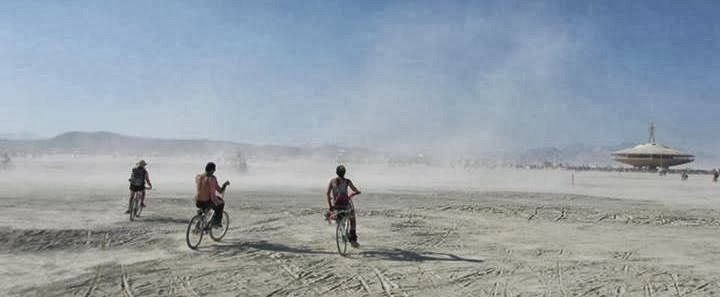Between the glass cube offices, new footbridges and luxury flats, you can still see the ghosts of industry etched into the regenerated landscape surrounding the Museum of London Docklands. A pair of navy gray cranes tower like dinosaurs over the dark, placid water of India Quay, cabins level with the Docklands Light Railway that sweeps past from Canary Wharf to Limehouse.
Leaving the train, winding down the ramp to ground level, I get the first taste of the estuary that I’m here to discover. A rusted barge bloats like a dead whale under the stout, round legs of the overhead rail, seemingly incongruous, beached out of time.
I walk along the quayside, past the cranes, to the end of a Victorian warehouse conversion, bikes chained to balconies above wooden loading ramps, a row of chain restaurants offering the same bland choice as every dockside redevelopment from Portsmouth to Liverpool. By the water sit a gaggle of branded deckchairs, a small tent and a man with a guitar attempting valiantly to bring some cheer to this strangely sterile space.
The Docklands museum itself is at the end of the row. It’s a beautiful building, outside and in. Heavy wooden roof beams brace the ceiling, propped up by near-petrified pillars and bare, sandy-coloured brick walls. Through the gift shop entrance there's an open-plan café, with plenty of comfortable leather arm chairs. It’s full of families, here for the fun-looking kidzone signposted with cartoon graphics that lead away to the right, and a youth group watching videos on laptops.
The exhibition I’ve come to see is 'Estuary – responses by contemporary artists', in gallery space to the left of the café. The low-beamed ceiling echoes with the sound of waves, seagulls and clanking iron; video soundtracks ebbing and flowing in a gentle wash.
I’m drawn directly to Jock McFayden’s horizon spanning landscapes, which seem to open out directly onto the estuary itself. Barley rippling foregrounds mirror equally blank skies. Caught between them, skeletons of cranes and concrete buildings squat the horizon, denying the flatness. Next to these Michael Andrews appears to have transplanted a section of the estuary onto the wall, stained with river sediment and washed with tides, hazy figures fishing from a groyne at the waters edge, boats blending into the land. The whole exhibition embodies this blurring convergence of land, sea, sky and industry: channeling that strange liminal zone between Greenhill and Whitstable where London meets the sea.
My reverie is interrupted by a cacophony of clanking iron to my left, where I discover '51 29'.9' North - 0º11' East' by the Bow Gamelan Ensemble, documented on video in 1985. Amid a boneyard of rusted barge hulls, three artists in sou’westers bang, clang and blow torch a variety of makeshift objects, detritus reclaimed as percussion. The tide rises around them and darkness falls. A glorious temporary reclamation from atrophy.
Andrew Kötting’s ‘Jaunt’ is a jolly bricolage of the sounds and scenes encountered on a riverboat from Southend Pier to Westminster in 1995.The voices of locals characters intersperse with the commentary of the captain, stories told in estuary accents, giving us context to cognitively map the length of the river mouth.
The journey is reversed in William Raban’s ‘Thames Film’. It overlays original film shot in the 1980s with archive footage and photos of the shipping industry, breathing monochrome life into the ghost that haunts the rest of the exhibition. Engravings, paintings and maps extend our vision further back; to the cuckold hangings along the 17th century riverbank lined with watermills and Peter Bruegel's hellish vision of death by shipwreck, beyond ‘hope’ (the actual point at which ships returning to harbour would deem themselves as beyond harm). There are also visions of leisure, bathers past and present paddling below the concrete wall of Canvey Island funfair.
Contemporary visions of industry are to be found in Peter Marshall's Thames Gateway, photographs of telegraph poles, new-build housing estates, scrap yards and short stretches of road. This absurdity of everyday banality is echoed in Simon Robert’s Southend Pier, palm trees lining the road in throwing long californian shadows over the asphalt car parks, the coloured loops and spindle metal towers of a fun-fair, pier stretching away into the distance.
Distance is also the focus of John Smith's 'Horizon (Five Pounds a Belgian)', a mesmerising seascape projected in HD onto the entire wall of a beam-lined screening room. The camera, our view, is looking out to sea, water, sky and their division the only defining features. A soundtrack of waves washes in, the same wave on loop or continuing waves in the same spot, it's hard to tell from the regularity. Every so often the film changes with one of these waves, not the frame or viewpoint, just the time of day, of year, of tide. The soundtrack bears no relation to the agitation of sea on screen, whether dark and white flecked or mill pond calm, it washes on like clockwork. Intermittently the shuffle pauses to allow a scene to unfold: the slow passing of a cargoship on the horizon; the playful tacking and jibing of a fleet of dinghies; a man and his dog on the invisible beach between us and the sea; a seagull emerging from fog; a lifeboat crew laying flowers, heads bowed in respect, before breaking the spell of voyeurism as they wave directly to us. How long did Smith spend on the beach to get this footage. Could one tiny stretch of coast really be so entertaining? It certainly held my attention for a good long while.
Relaxed, like I've had a day at the seaside, I leave the gallery in search of a coffee, feeling as if I've travelled much further than Canary Wharf this afternoon.

